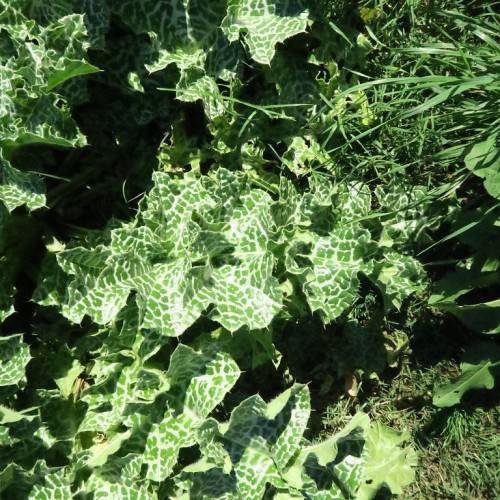
blessed milkthistle
Silybum marianum
Cycle:
Herbaceous Perennial
Watering:
Average
Hardiness Zone:
5 - 10
Flowers:
Flowers
Sun:
Full sun
Fruits:
Fruits Ready In Summer
Leaf:
Yes
Growth Rate:
Low
Maintenance:
Moderate
Drought Tolerant:
Yes
Salt Tolerant:
Yes
watering
Blessed milkthistle needs to be watered deeply and infrequently. During the growing season (April to October), make sure to water the plant about once a week and provide approximately 1-2 inches of water each time. During the winter months (November to March), reduce the frequency to just once a month, while still providing the same amount of water. If the soil feels dry, however, you can water more often. In addition, maintaining even moisture levels is key for healthy growth. It is best to check the soil’s moisture by feel or with a moisture probe.
sunlight
Blessed milkthistle (Silybum marianum) is an annual herb that prefers a sunny location and needs 6 to 8 hours of direct sunlight each day for optimum growth. During the summer months the sun will reach its highest point in the sky at midday and so the best time to expose the plant is between 10 am and 2 pm. When the days get shorter in the fall months, the duration which the blessed milkthistle is exposed to the sun will decrease, but it should still receive at least 4 to 6 hours a day.
pruning
Blessed milkthistle (Silybum marianum) is a relatively carefree plant, thriving in most climates. It is best to prune this plant in late spring or early summer when its growth is the most active. While this species is not particularly high maintenance, regular pruning can keep it looking neat, tidy, and attractive. To prune, start by removing any dead or diseased branches. Then, look for any growth that is overcrowding other branches or is growing in an awkward direction. To heal wounds made by pruning, make sure to clip the branches at an angle and avoid tearing. Then, remove no more than 1/3 of the total foliage at a time from any given branch. Cutting too much in 1 session can lead to stunted growth and a lower quality crop. Finally, remove any flower buds that are already forming to exceed the capacity of your plant. When pruning blessed milkthistle, it is important to take caution to keep the plant in healthy condition. Prune in late spring or early summer no more than 1/3 of the total foliage at a time, remove any dead/diseased branches, and remove any flower buds that are already forming. Following these simple steps can help ensure that your blessed milkthistle will look stunning year-round.
